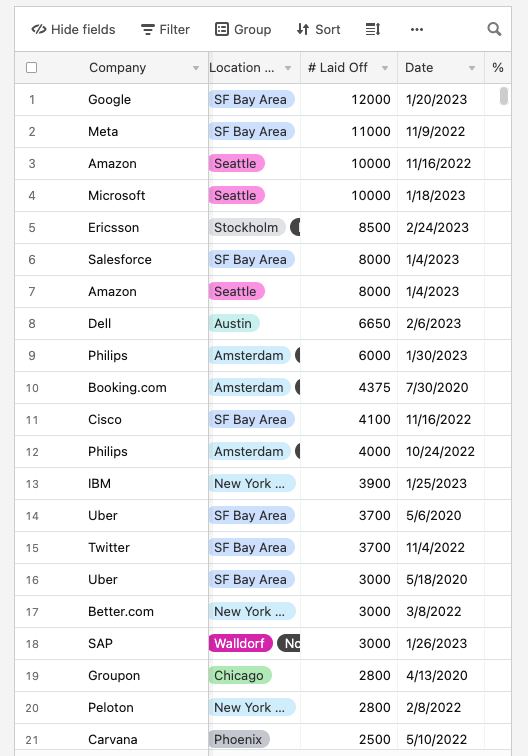The Jobs Data Continues To Get Worse

Image Source: Pexels
A few weeks ago, I published an article on TalkMarkets that showed how the jobs market appears to be worse than what the media and the Federal Government are leading people to believe. We saw further evidence of that earlier today as Meta Platforms (META), which owns Facebook, Instagram, WhatsApp, and various other popular social networks announced yet another round of layoffs. This comes on the heels of the company’s previous layoffs back in November, at which time the company laid off approximately 11,000 employees.
Zero Hedge provided a great summary of the recent layoff announcement earlier today:
The job cut, which could start as early as this week, will add to the November layoffs of approximately 13% of its workforce (equivalent to around 11,000 employees). Sources said the job cut would be ready before CEO Mark Zuckerberg goes on parental leave for his third child.
Meta Platforms has hardly been alone in announcing massive layoffs over the past year. There have been numerous other companies in the technology sector that have made similar announcements. A website was recently established at https://layoffs.fyi/ to track the various layoffs that have been made across the technology sector since the start of 2022. Here are the somewhat sobering statistics provided by the site:
| YTD 2023 | FY 2022 | |
| Companies Announcing Layoffs | 461 | 1,049 |
| Employees Laid Off | 125,677 | 161,411 |
Here are some of the more high-profile layoffs that took place since the start of 2022:

Source: Zero Hedge
It is important to note that these figures only include the technology companies that have laid off employees in the past fifteen months. We have also seen large layoffs at companies such as Capital One (COF), Better.com, Coinbase, and numerous others. It is very hard to believe that the jobs market is nearly as strong as the Bureau of Labor Statistics reports state when we consider this data.
I did provide one possible explanation in the introduction to a recent article that was published at Seeking Alpha. In short, one possible reasonable explanation can be found in the forty-year high inflation rate that has been plaguing the American economy recently. As I have mentioned numerous times, there has not been a single month over the past year in which the consumer price index did not increase by at least 6.4% compared to the prior-year quarter:

Source: Trading Economics
As many of those reading this are well aware, two of the areas in which the inflation has been centered are food and energy. These are both generally considered to be necessities for modern life, which has made this inflation very difficult for people of limited means. Contrast that with a situation in which only the price of high-end yachts and similar items is increasing while necessities remain static. This situation has thus caused many people at the low end of the income scale to look for additional sources of income.
By and large, poor people do not have sufficient assets to be able to purchase income-producing securities and similar things to boost their incomes. As such, they are forced to take on second jobs. According to a McKinsey’s American Opportunity Study that was conducted during the second half of last year, the number of Americans that are currently working a second job for economic reasons is at a thirty-year high. There is other evidence that many Americans are being forced to work multiple jobs in order to pay their bills and feed their families. As Mish Shedlock points out in a recent piece, a recent Prudential Pulse survey states that approximately 81% of Generation Z members and 77% of Millennials have either entered the “gig economy” or are considering doing so in order to bolster their incomes.
This could explain some of the figures that we are seeing in the official job reports. One of the problems with the official numbers from the Bureau of Labor Statistics is that they consider full-time work and part-time work as being equivalent. In addition, they double-count someone that is working two jobs because one job does not pay enough to cover their bills. Thus, a former high-paid technology worker that got laid off and was forced to take a part-time minimum wage job will not have a negative impact on the official jobs numbers, despite the fact that this individual’s financial situation significantly deteriorated. We should therefore take the official reports with a grain of salt, as other sources seem to be pointing to much more economic weakness than the official reports.
More By This Author:
No, The U.S. Market Is Not Cheap
A Look At Offshore Drilling Day Rates
Oil Fundamentals Remain Very Solid For 2023 And 2024
Disclosure: I have no positions in any stock mentioned in this article and no plans to enter into any positions within 72 hours.
Disclaimer: All information provided in this article is for ...
more


